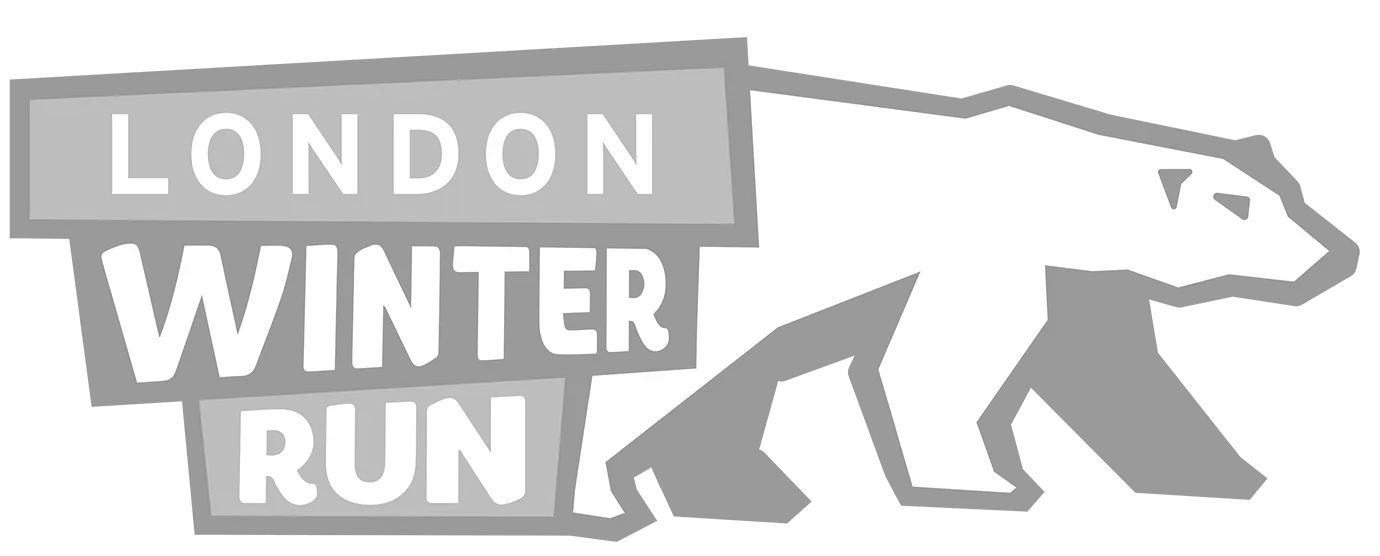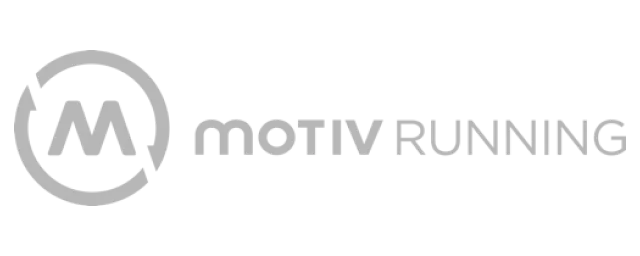Triathlon training plan
Use one of our personalized triathlon training plans for runners to take your running to the next level and smash your goals at your next triathlon event.

How to train for a triathlon
A triathlon is an endurance race that features three disciplines – swimming, cycling, and running, in that order – in which participants compete for the fastest finishing time over varying distances. The history of triathlon can be traced back to the early 20th century, with the first triathlon events that are similar to modern-day competitions taking place in the 70s.
A triathlon is one of the most intensive athletic competitions out there, so it requires intensive training in all three sports, typically over a few months. It’ll test not only your physical fitness and endurance but also your grit and mental resilience.
Some of the most common types of triathlon races and distances are:
Juggling all three disciplines when training for a triathlon can be challenging and it requires a strong commitment and dedication – but the variety of it makes it interesting and fun. You’ll certainly learn a lot along the way, and once you’ve done one triathlon, there’s no looking back!
Some of the cornerstones of a successful triathlon training program are to:
- Build a training schedule for all three sports: Add training sessions to your calendar to integrate them into your life easily
- Use the 80%/20% principle to manage your training volume and intensity: do 80% of your training at low intensity and train at threshold levels 20% of the time
- Make your training a social activity: join a triathlon club or community and train with others at least some of the time
- Follow a triathlon training plan: A customized plan that structures your training is a great way to hold yourself accountable and track your progress
To make all this easier for you, we’ve built Runna, a dedicated running app that features personalized triathlon training plans for all skill levels, distances, and goals.

Take your running to the next level
Our personalized triathlon training plans
The best way to level up your running game for your next triathlon race is to use a training plan that is tailored to your fitness, schedule, and objectives.
With Runna, your running coaching app, you get a personalized triathlon training plan that:
- Structures every week and sets out all running sessions for you
- Adjusts your mileage and types of runs to your current skill level, the race distance, and schedule
- Fits perfectly alongside your swimming and cycling sessions
- Incorporates deloads and strength training
- Helps you manage your recovery and nutrition
In short, a plan takes care of all the logistics, enabling you to focus purely on improving your running game.
Pick the plan that best suits your goals and current level:
12 week Half Ironman triathlon running plan
If you're training for a Half Iron triathlon, this plan is the best way to prepare for the 21.1 km (13.1 miles) of the running portion of the race.
This plan structures your week and sets out all your running training sessions so that you can simply focus on becoming a better runner. This plan is for athletes of all skill levels: Regardless of whether this is your first or your 10th competition, we’ve created the optimal training structure to fit your running ability.
- If you’re a beginner, you’ll receive an introduction to interval and structured training sessions to prepare you for 21.1 km of running
- If you’re an experienced runner, you’ll be able to build on your existing fitness to improve your threshold pace for the entire distance of the half-marathon
Get ready to reach the finish line faster and stronger with your personalized Half Iron running plan.
16 week Iron triathlon running plan
Are you preparing for your first (or next) Iron distance triathlon? If yes, this plan is for you! It helps you prepare for the running portion of your next race by taking into account your preferences, abilities, and schedule.
Achieve your goals and reach the finish line faster with a personalized running plan designed specifically for Iron triathlon athletes of all skill levels.
- If you’re a beginner, we’ll introduce you to interval and structured sessions that’ll build your endurance and running skills
- If you’re a seasoned runner, you’ll build on your current fitness level to improve your speed and performance for the entire marathon distance
Get ready for your next Iron triathlon competition with a customized running plan.
10 week Olympic triathlon running plan
Whether it's your first triathlon or you're an experienced triathlete, prepare to nail that 10k run with this plan!
Runna’s personalized training plan is specifically designed for the running portion of Olympic distance triathlons and will help you get the most out of your training by structuring every week and every session for you.
Beginners will get an introduction to interval and tempo running to nail those 10km, while experienced athletes will be able to build on their performance and improve their threshold pace throughout the entire distance.
Finish faster and stronger with a tailored Olympic triathlon running plan.
8 week Sprint triathlon running plan
Wondering how to run a faster 5k in your next Sprint triathlon race? This plan is for you.
Specifically designed for the running portion of Sprint distance triathlons, this running plan will help you improve your 5k speed and performance and reach the finish line faster.
For experienced runners and beginners alike, it structures all your running sessions, meaning that you can purely focus on your running game and improve your running skills, week after week.
A triathlon running app like Runna is one of the best ways to prepare for your first – or next – triathlon race, regardless of your experience level or the race’s distance.

Take your running to the next level
Triathlon nutrition
Nutrition plays a crucial role in your triathlon training and race-day performance, so you need to know how to fuel your body to achieve the best results.
As you dial up your weekly training volume, you’ll also increase your energy expenditure. This means that you also need to increase your caloric intake to fuel your training and recovery.
You need an adequate amount of protein to help with muscle repair; carbs are an excellent fuel for endurance training, but if you feel better on a diet that’s higher in fats, that’s also completely ok. Don’t make drastic changes to your diet in the last few weeks before your triathlon race; instead, focus on making healthy day-to-day choices and fueling your body properly.
Because you won’t be able to consume food when swimming, it’s important to ensure that you get adequate nutrition before the race and during the cycling section. Experiment with different fuel options during your longer training sessions, to see what works best for you.
Race week nutrition
Now that you’ve done all the hard work of training for your triathlon, it’s time to reduce your training volume and intensity and make some final tweaks to your nutrition.
This is when you’ll be carb-loading, or increasing the ratio of carbohydrates in your diet, while simultaneously reducing your mileage. This will enable your body to store enough energy in the form of glycogen in your muscles, which will fuel your effort on race day. One gram of glycogen is stored with 3 grams of water, so you might gain a bit of water weight during this process.
You don’t need to drastically increase your calories in the week before your race, nor do you need to rely on processed foods or sugar. Instead, focus on increasing the proportion of carbs in each meal, dropping fats slightly. For this, keep in mind that 1 gram of carbs is 4 calories, while 1 gram of fat equals 9 calories. Complex carbohydrates like oats, rice, whole grains, vegetables, and fruits are ideal.
At the same time, you need to keep your protein high to help with muscle recovery and slow the digestion of carbs.
This approach is ideal for race day, too: You want to make sure you can sustain yourself throughout the entire race.
Consider all other areas of recovery, too: Get enough sleep, hydrate yourself well, and do plenty of stretching and mobility exercises.
Three days before your race
At this point, you might want to reduce your fiber intake (meaning veggies, fruits, whole grains, cereals, and beans) to reduce the weight in your intestines and have a smooth race.
Two to four hours before your race
On the day of your race, eat a meal that’s high in carbs to top up your glycogen stores. Keep protein relatively low (below or around 15 g). Ideally, you should aim to eat this meal 2 to 4 hours before you cross the start line to give your digestive system enough time to start moving.
Don’t try anything new on race day. Stick to tried and tested combinations that you’re familiar with from your longer training sessions.
Triathlon training: How to manage all three disciplines
Getting the right balance between swimming, cycling, and running is essential for successfully preparing for a triathlon. Below, you’ll find our top triathlon tips to help you manage your training.
Running
When training for running in a triathlon, you’ll essentially be using a similar training plan as if you were training for the same distance. The main difference is that you need to be mindful of the number of running days, so that you have enough days when you can swim, bike, and do strength training – and still have rest days.
Cycling and swimming
Increase your swimming and cycling weekly mileage progressively, in a similar way as for running. Add more miles gradually and make sure to have deload weeks and a mix of training sessions, from easier, to threshold pace, to long and steady workouts.
The goal is to reach a fitness level that allows you to complete each discipline’s distance in isolation and still have enough in the tank, so that you can do all three back-to-back on race day.
Swimming is an excellent way to train when recovering from a longer run (or one that was more challenging than usual), because it has a low impact on your joints.
Brick training
“Brick training” refers to running straight off the bike – and it’s a term that you’ll hear a lot in triathlon training.
Ideally, you should do this at least every second week, but don’t compare your performance and pace to when you’re running fresh: Naturally, brick training runs will be more difficult. Start with short, easy runs and gradually increase the mileage until you’re able to manage a long run straight off the bike.
Volume and intensity
Two of the most essential factors in triathlon training are volume and intensity:
- Volume is the time or distance you cover across all three disciplines (for example, in a week) and is a combination of the duration and frequency of training
- Intensity is how hard you train
The best way to improve your endurance and performance when training for a triathlon is to apply the 80/20 principle: do 80% of your weekly volume (in terms of distance or time) at low intensity and 20% at high intensity. This framework will help you plan your training for all disciplines.
Your overall training load (the combination of volume and intensity) will sometimes be pretty intensive, so you need to factor in rest days and easy training sessions in between more challenging workouts. If you don’t, you risk injuring yourself, seeing your performance drop, or feeling exhausted. If you notice any of this, make sure you dial down the training load by taking a few rest days or doing a deload week.
Split your training time between the three disciplines depending on how long each part might take during the race.
For example, if an Olympic triathlon takes 2 hours and those are split into ¼ swimming, ½ cycling and ¼ running, use the same ratio to distribute your training time across the three. This means that if you have 12 hours available to train each week, you should spend 6 of them training on the bike, 3 running, and 3 swimming.
As for the intensity, the rate of perceived exertion (RPE) is a very useful way to address this. Aim to spend 80% of your training in levels 1 to 4, 15% in levels 5 to 8, and 5% in levels 9 and 10:

Strength training
Strength training will be very beneficial for your overall performance and fitness – and it’ll also help you prevent injuries. It helps improve your running economy by about 8 to 12% and will help you perform better in the other two disciplines, as well.
With Runna, you'll be able to add a fully personalized strength training plan that fits alongside the rest of your workouts. Our strength and conditioning programs are custom-built, based on your current ability, the desired frequency, and the equipment you have available (even if you have none, we have tons of bodyweight exercises for you).
As featured in




Types of runs for triathlon training: Speed work, long runs, easy runs
To get the most out of your triathlon running training, there are a few different types of runs you should get comfortable with.
Speed work
To run faster, you need to practice running at faster speeds by using:
Interval sessions: Interval training means running faster than you can run do so continuously, with rest periods of walking in between
Tempo sessions: Tempo training means running at a slightly lower speed than when doing intervals, but for longer; you should also keep jogging between faster sections
As a part of your triathlon running plan, you’ll alternate between those two every other week.
Long runs
Long runs are essential, even if you’re training for a shorter goal, such as a Sprint triathlon, because they help you build your body’s endurance. If you learn to run longer at slower speeds, you’ll also learn to go faster for longer!
Easy runs
Easy runs are an important part of every triathlon athlete’s training program. They enable you to build leg strength and endurance without the exhaustion associated with more challenging sessions. This means that you’ll be able to recover faster, reduce your risk of injury, and be fresher for your swimming and cycling training sessions.
Brick runs
A brick run is when you run straight off the bike. If you’re new to triathlon training, this will be challenging at first – your legs will feel heavy and your performance will not be the same as when you’re running fresh. At first, you need to start with shorter runs and progressively build up your endurance and confidence for running off the bike.
Mileage
First, start with a weekly mileage your body can tolerate – this will help you get used to training for the three disciplines simultaneously and will also reduce your risk of injury. You can then progressively add more kilometers as you go, but not by more than 10% each week.
Avoid increasing significantly the frequency of your runs, too; add one day of training at a time. Use deload weeks every 3 to 5 weeks to let your body recover and adapt to your recent training.
Take your running to the next level




Post-triathlon recovery: sleep, rest, cross-training, and more
If you’ve just completed a triathlon, first of all, congratulations!
Finishing a triathlon is an impressive achievement that tests your endurance and mental resilience – and that can be really exhausting and painful.
So, it’s essential that you allow yourself enough time to recover. Your post-triathlon recovery is an essential part of your journey, so you should treat it as such. This will enable you to get back to training without risking an injury or feeling burnt out.
Here are our top tips to help you recover from your triathlon race:
- Get a few days of rest: After you finish your race, give yourself a few days of rest to heal from the stress and exhaustion. You don’t need to spend this time on the couch, but make sure you keep all physical activities at a low to moderate intensity.
- Sleep, sleep, sleep: Because of the adrenaline rush, you might find it difficult to get a full night of sleep immediately after a race; it might take you a few days to get consistent 8-hours nights, but do make sleep a priority. That’s when your body does most of the repair work!
- Be mindful of your nutrition: Make sure to refuel your body adequately after the big day. Aim for meals rich in carbs and in protein to replenish your glycogen stores and help with muscle repair.
- Decide on your next goal: Triathlon training can be very intensive, so if you don’t set a new goal, this might leave you feeling empty. Picking a new goal will help you stay focused during the recovery phase.
Triathlon gear: bike, shoes, clothing, and more
What you wear while training for a triathlon and on the day of your race will have a big impact on your comfort. Given that triathlons involve three disciplines, you need to put some effort into finding the right gear for you.
Here’s a list of the gear you might consider:
- A bike for the cycling part; if you’re a beginner, you can use your regular bike, while more experienced athletes might look into more specialized options. Make sure your bike is in good condition and take it to your bike shop to check it before the race
- A flat tire kit to change a flat tire if needed (make sure you know how to use it)
- A triathlon suit that you can use for all three disciplines; pick a tri suit made of quick-drying performance fabrics with padding in the crotch area (to keep you comfortable during the bike ride). Alternatively, you could use a wet suit, bike shorts, and a t-shirt
- A sports watch to track your progress during training and your performance on race day
- A towel or a mat to help find your bike once you get out of the water, dry yourself, and put your shoes on
- Running shoes to keep your feet comfortable during the run; it’s best to go to a specialized shoe store with an in-store treadmill where you can try on a few pairs
- A helmet to protect your head in case you fall during the cycling section
- Eyewear such as goggles for the swimming leg of the race and sunglasses for the other two disciplines
- Race belt to which you can clip your race number
- Hydration gear and nutrition to get enough water and calories during your race
- A high-SPF sunscreen to protect yourself from the sun – that’s a must, even on cloudy days
Always keep in mind the golden rule, however: On race day, don’t try anything new.
Stick to clothes, shoes, and gear in which you’ve already run long distances. You don’t want to discover halfway through your maraton that your shorts ride up uncomfortably or that your t-shirt feels itchy.
Our partners




































FAQ: All you need to know about triathlon training
Triathlon distance: how long is a triathlon?
There are a number of triathlon races you can compete in, and they vary a lot in terms of distance. Here’s a quick (non-exhaustive) table that sums up the most popular ones:
How long will it take me to prepare for a triathlon?
This is highly individual and will depend on:
- Your overall fitness
- Your experience with endurance events and sports
- Your experience with each of the sports
- The specific race and the distances you’ll need to cover
- The time you have to prepare
- Your schedule and availability
Training for a triathlon typically takes anywhere from 10 to 26 weeks, based on all those factors. Consistency and accountability are key, as is having a solid triathlon training program.
To prepare for the running section of your next triathlon event, get one of Runna’s personalized triathlon running plans. Our plans are specifically designed for triathlon athletes and are built to fit into a busy training schedule, helping you prepare in the best way possible.
Which triathlon training plan should I pick?
The plan that’s ideal for you will depend on the type of race you’ll be competing in, its total distance, the time you have to train, and your current physical ability.
A custom triathlon running plan will take into account all this and help you prepare for the running section of your race in the best way possible. As experienced runners and triathlon athletes ourselves, we’ve made sure to build plans suitable for every athlete and every goal.
What triathlon finishing time should I aim for?
If it’s your first time, simply reaching the finish line is already an enormous achievement, so focus on making your experience as pleasant as possible – and, also, injury-free.
If you already have a few tri races under your belt, Runna’s personalized running plans for triathlon athletes will help you make the most out of your training and finish faster and stronger.
Triathlon training and injuries: What should I do if I’m recovering from an injury?
Triathlon training can be very demanding, so make sure you prioritize your own safety. If you’re recovering from an injury check with your doctor or physiotherapist if you can start preparing for a triathlon race. They’ll be able to advise you on the best approach and plan your recovery strategy with you.
Once you get their green light, you can use a triathlon training app like Runna to prepare for the running segment of your next race safely and without risking another injury.
Triathlon and general fitness: Do I need to do strength training to prepare for a tri race?
Strength training is not an absolute must – but it’s certainly a great addition to any triathlon athlete’s training program. It’ll help you improve your performance across all three sports and prevent injuries.
All Runna’s plans feature optional strength training programs to help you prepare for your next tri race with the equipment you have available (even if you have none).
I’m not ready for my first triathlon yet. What’s an easier goal I can aim for?
If you’d like to take part in a triathlon race in the future but aren’t ready to do that just yet, you can prepare for the running distance of the race while also progressively adding cycling and swimming to your training routine.
Unsure how to choose a running goal? Find out more about choosing the right running goal for you.
